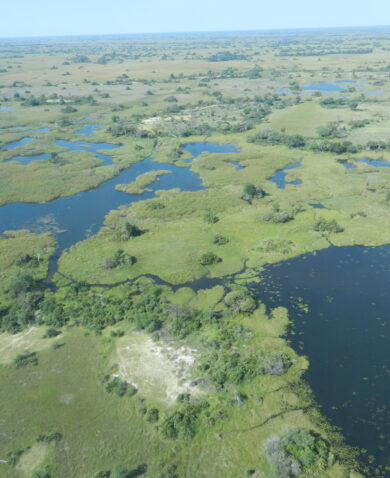
Know Your SDGs: Valuing Forests and Other Terrestrial Ecosystems
August 21, 2015 | 3 Minute ReadOn the Indonesian island of Sumatra, land conversion threatens wildlife and has blanketed the island with a haze so thick that it grounds planes and forces school closures.
As Eileen Hoffman observed in last week’s blog post on Sustainable Development Goal (SDG) 1, the seventeen SDGs are interconnected and must be pursued concurrently. Poverty alleviation, food security, sustainable economic growth, gender equality — each goal contains ambitious targets, but it is the commitment to resilience and inclusivity enshrined across all the goals that weaves them together into a vision of the global agenda for the next 15 years or more.
Scanning the goals in the context of that vision, Goal 15 sticks out, and not just for the length of its title. While every other goal’s title, including that of Goal 14 (which James Dailey blogged about) has an immediate and directed orientation toward human well-being and societal stability, Goal 15 wrangles our terrestrial surroundings into the picture and places it in our custodianship. The title — “Protect, restore and promote sustainable use of terrestrial ecosystems, sustainably manage forests, combat desertification, and halt and reverse land degradation and halt biodiversity loss”—addresses the “what,” but the “whys” as they relate to humankind are left largely unsaid.
And yet, those implied ends, or “whys,” are not just preserving nature for nature’s sake, or even for our long-term use. Achievement of targets under Goal 15 has profound implications for the development of resilient, inclusive societies. In forestry policy expert Frances Seymour’s analysis of Goal 15 she wagers “that if you set up a 17 by 17 matrix and mapped which goals contributed to other goals, Goal 15 (and forests in particular) would be one of the minority that make significant direct contributions to the achievement of most of the others.” Ecosystem services provide economic and health benefits, wildlife trafficking prevention can curtail growth of destabilizing illegal groups, and forests are on the front lines of our struggle to store carbon emissions and mitigate climate change. Goal 15 matters—it matters tremendously. And what matters next are the types of targets and national action plans that governments set in line with the SDGs, and whether the incentives are clear enough to carry these action plans to fruition.
The means of implementation—essentially the “how”—associated with Goal 15 hint at how undervalued terrestrial ecosystems can be. The means proposed are predominantly financial, either directly (such as mobilizing financial resources for conservation, sustainable use, and sustainable forest management) or indirectly (such as increasing sustainable livelihoods opportunities as an alternative to poaching and wildlife trafficking, or by promoting incentives for sustainable forest management). Incentives don’t have to be purely financial. Whether one is a smallholder farmer, CEO of a major multinational corporation, or state leader, somewhere down the logic chain business incentives, social benefits, and conservation incentives intersect. The question is whether the connections can be made in time.
Recent commitments have brought this intersection to the forefront, including the 2014 New York Declaration on Forests, in which 178 governments, companies, indigenous groups, and NGOs pledged to “support and help meet the private-sector goal of eliminating deforestation from the production of agricultural commodities such as palm oil, soy, paper and beef products by no later than 2020.” Terrestrial ecosystems are gaining powerful advocates, but the proposed means of implementation imply that even more muscle is needed to get people moving on Goal 15’s targets.
Most importantly, resources for achieving Goal 15—whether financial, human, or political—must be seen as fueling the other SDGs as well. When the International Institute for Education and Development asked countries to reflect on the policy coherence of Goal 15 vis a vis other SDGs, there was “widespread recognition of the potential for conflict and the inevitability of trade-offs being reached based on national circumstances” but that the economic, environmental, and social “pillars of sustainable development were all equally important and had to be implemented and balanced through national policies and strategies.” Let us keep an eye on Goal 15 in practice, and ensure that our vision of a resilient and inclusive world includes maintaining the diversity and health of species and ecosystems, which underpins our well-being.
Curious about the SDGs and post-2015 development agenda? Watch this space. “Know Your SDGs” is a recurring weekly blog series digging into the goals in the lead-up to the United Nations General Assembly and post-2015 development summit this September. Missed a post? Check out previous entries on sustainable cities, poverty, and food security.





















